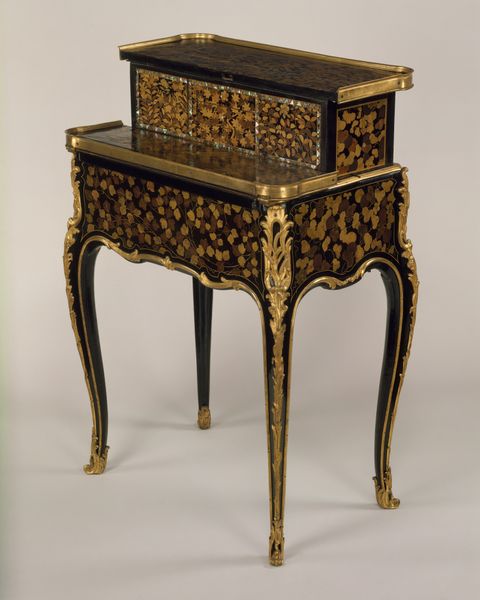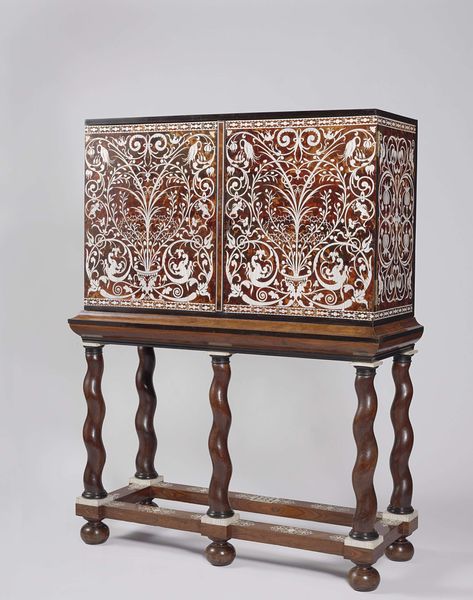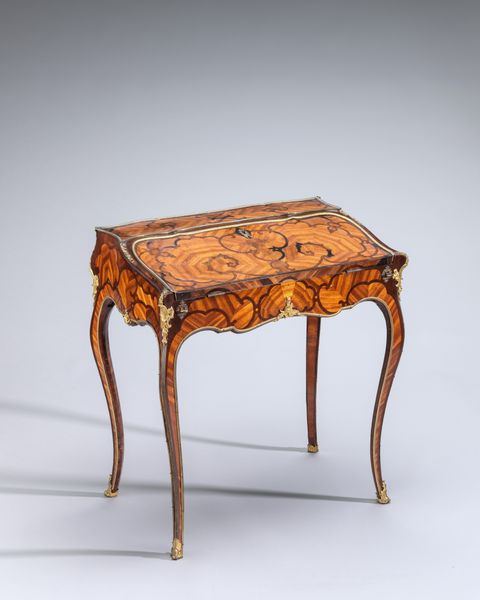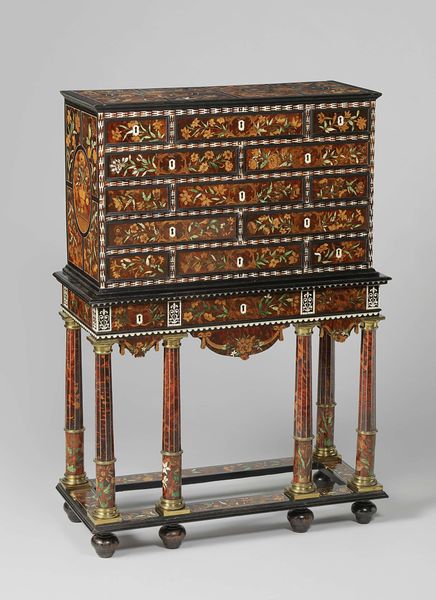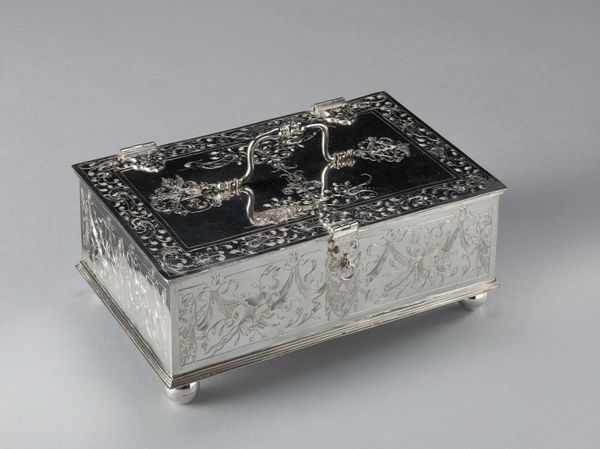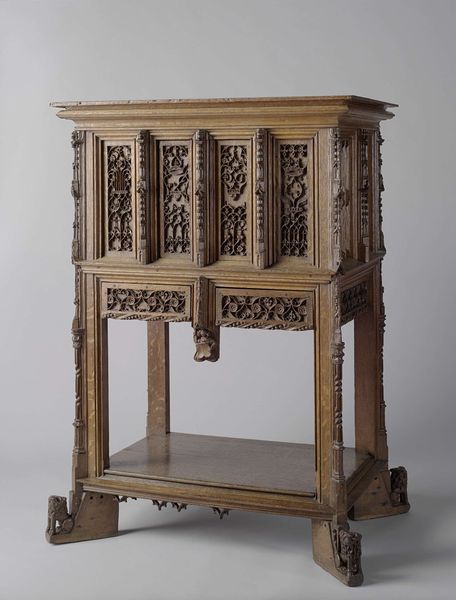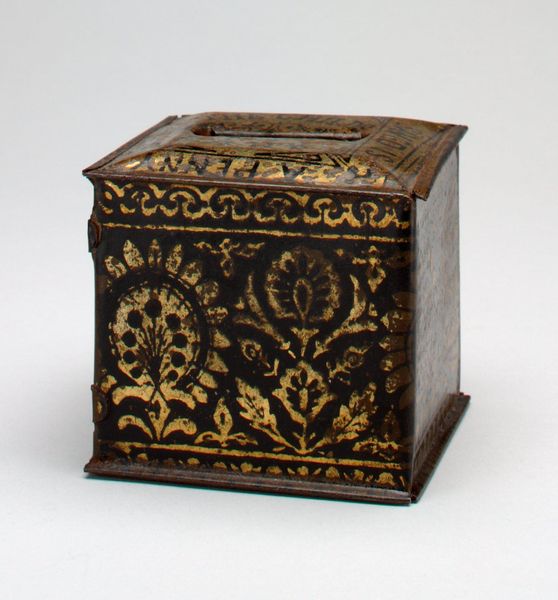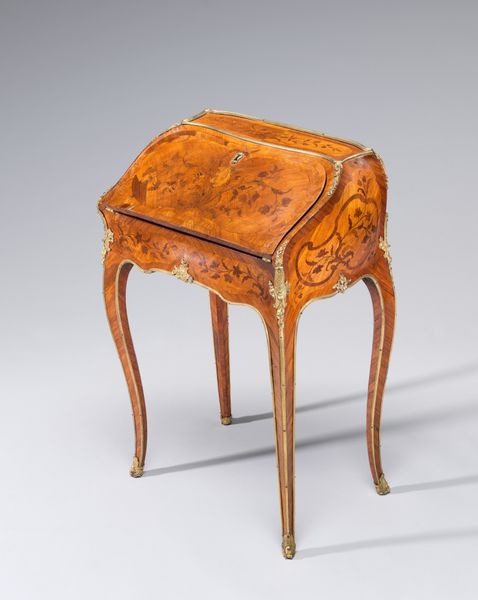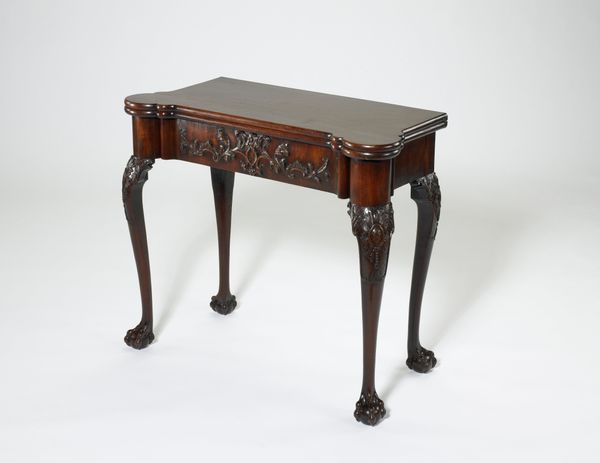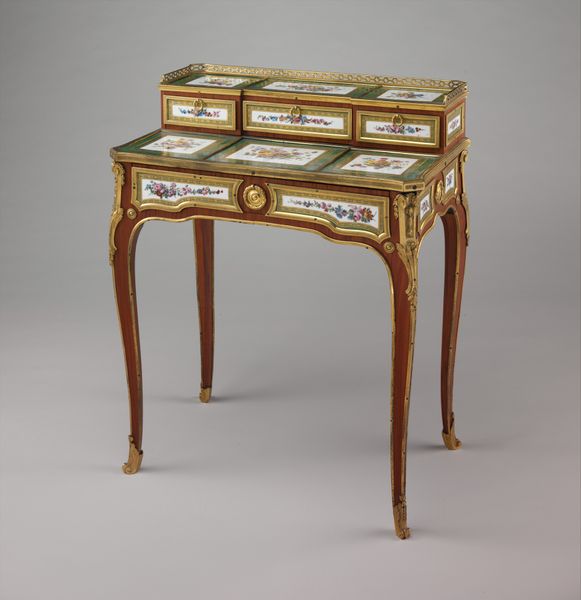
carving, metal, wood
#
carving
#
baroque
#
metal
#
sculpture
#
furniture
#
wood
#
decorative-art
Dimensions: 35 1/2 x 25 x 14 1/2 in. (90.17 x 63.5 x 36.83 cm)
Copyright: Public Domain
Curator: Editor: So here we have this magnificent “Writing desk on stand”, from around 1725 to 1750. It is currently held at the Minneapolis Institute of Art, and is a fascinating piece which looks to incorporate materials like wood, metal and is decorated with carving. The detailing feels incredibly intricate... How do you interpret this work? Curator: From a materialist perspective, I find myself focusing on the production of this desk. Notice the confluence of different materials and presumably workshops involved in its creation. Wood, metal, and the carved elements all point to specialized labor, highlighting the social dynamics of consumption and craftsmanship during this period. How do you see the combination of materials working together? Editor: I find the combination intriguing because it makes me think of cultural exchange. Are we seeing, perhaps, an artisan deliberately working with materials that might come from diverse locations, maybe even alluding to different trade routes of the period? Curator: Precisely. The material provenance, coupled with the skilled labor involved in shaping these materials, reveals much about the social fabric and economic systems in place. The desk becomes not just a functional object, but a record of material circulation and human interaction. Look at the tiny carved elements – could that indicate access to certain tools or a particularly refined tradition of craft production? Editor: Absolutely. That emphasis on access, whether to materials or skills, gives a real tangible connection to the historical context and the people involved. Were all these raw materials locally sourced, or were they imported from further afield? What impact might the trade of exotic goods have on those carving practices? Curator: Exactly! And beyond mere function, how did this desk play into displays of wealth and status? What kind of individual or family might commission such a complex piece? What do we know about access to education in that context? Editor: These insights make the desk much more meaningful and richer in significance, as a manifestation of economic, geographic and social power. Curator: Indeed. It shifts the focus from aesthetic appreciation alone to understanding the networks and relationships embedded within the object itself.
